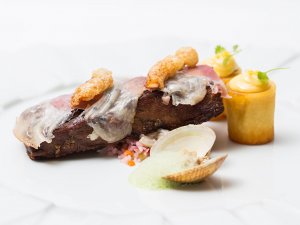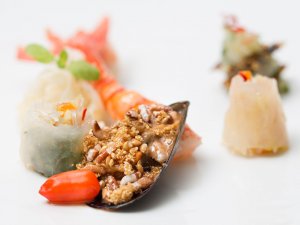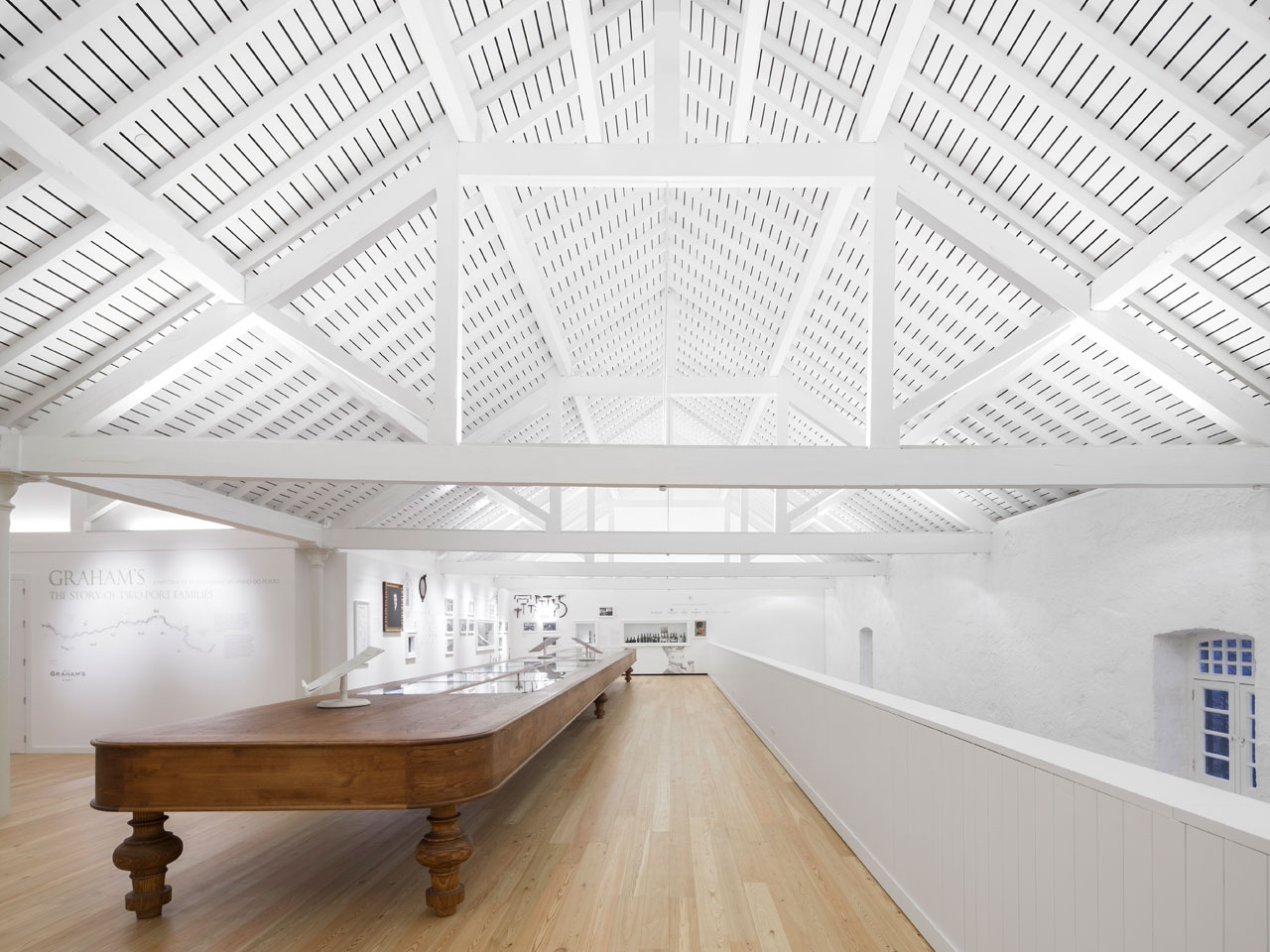Wine Stories | Inside Porto
The second-largest city of Portugal, Porto – or Oporto, in English – is an eclectic mix of architectural types spreading along abrupt slopes, linked by narrow cobbled streets and long, very long rows of stair walks: elegant churches, monumental buildings or row houses, either painted in ochre yellow or brick red colors, decorated with shiny tiles or defined by intricate framings and stuccos. But above all, the town’s atmosphere, from dedicated urban areas to gastronomy, is built around the wines, including the one who bears the city’s name.
In fact, Porto gave two names. One can be found in Vila Nova de Gaia, the twin city from the south bank of the Douro River, into the ruins of the Cale fortification, dating from Roman conquest of Lusitania. The port of the little Cale castle became Portucale and, from this name, the country’s name is derived.
The other name identifies with the famous Vinho do Porto which, besides other excellent DOC and sparkling wines, is exclusively obtained from vineyards planted along the Douro river valley of northeastern Portugal. Since 1756, when it was established by Marquis de Pombal, illustrious Portuguese figure, this land is known as Região Demarcada do Douro, and is the third demarcated wine region in the world after Chianti in Toscana (1716) and Tokay in Hungary (1737). The Porto wine is exclusively obtained and produced from and in this delimitated and internationally renowned geographical area, and the specific name of Porto wine stood out, in the beginning, for this specific place from which the wine casks would leave on ships for France, England and then the two Americas.
Once the introduction drafted, I suggest we go back in town for a short walk in the old center (or Ribeira, as it is called) looking for some original places which define the urban and gastronomical identity of the town, true Mecca for all wine aficionados. Of course, each and every visit to Porto, and each and every different taste would lead to a different selection; the one now presented is based on personal findings during a visit from last year.
So, the historical center of the town became UNESCO heritage in 1996 and the atmosphere of its streets sends us back in several time periods as it is marked, among many others icons, by the double majestic bridge designed by Gustave Eiffel (and finalized in 1886, meaning before the Eiffel Tower); by neoclassical landmarks (such as Palácio da Bolsa, former stock of the city), baroque interventions (such as the interior of Saint Francis church or the Clerigos tower of architect Nicolau Nasoni) or Art Deco ones (like the Café Majestic). The contemporary image also integrates into the city through Museu de Arte Contemporânea (by Alvaro Siza Vieira) or Casa da Música (by Rem Koolhaas), but in the urban areas surrounding Ribeira.
Boa Nova
One of the important names linked with Porto is the renowned Alvaro Siza Vieira, architect born in 1933 in Matosinhos (city which begins close to Porto’s limits and extends up to the Atlantic coast) and also his Boa Nova Tea House, one of his first projects. At the time (1956), Siza Vieira was working with Fernando Távora, architect who won the contest and passed the execution to the young Alvaro. And so, the spectacular landscape of the location received one of the most renowned and appreciated architectural concepts of the time (the project was finalized in 1963) and later (in 2011) declared a Portuguese National Monument.
Closed and partially destroyed by a storm in 1990, Boa Nova is reborn in 2014, under the supervision of Siza Vieira and thanks to a local initiative to restore and recreate all finishes and details, including the furniture exactly as originally designed and also using the same red African wood, Afizélia, which gives the interior its unmistakable identity. The Tea House becomes Boa Nova restaurant, part of the Chef Rui Paula locations. Sublicensed for 20 years and with the benefit of an almost one million euros investment in kitchen equipment, the new place with a 40 seats restaurant, a bar and a lounge area, emphasizes on avant-garde cuisine based upon seafood dishes: “my aim is that Boa Nova becomes a new gastronomic landmark of North Portugal and honors both culinary tradition of Matosinhos and the location itself – an architecture so naturally born out of the rocks and perfectly integrated into the Atlantic landscape” says the Chef.


One of the most important names of Portuguese gastronomy, appreciated and awarded for dishes and for meal pairings with local wines, member of Masterchef Portugal and author of the also awarded “Uma Cozinha no Douro” book, Chef Rui Paula was born in Porto, in 1967, still his passion for cooking was born in the Douro area, in Alijó, thanks to family recipes and traditions. And it is here that he would also open his first restaurant, Cêpa Torta (1994 – 2000). Then, in 2007, the DOC restaurant, located in a spectacular place on Douro river valley, between Régua and Pinhão, follows; in 2010 – the DOP restaurant is opened in the historical center of Porto and, also, a collaboration as Consultant Chef for Vidago Palace (one of the top luxury destinations of Iberian Peninsula, hotel opened more than a century ago and, in 2010, renovated and completed with a new extension signed by the same Siza Vieira) starts. And, in 2013, a new Rui Paula restaurant opens in Recife. http://ruipaula.com/
Rui Paula DOP Restaurant
The Arts Palace in Largo de São Domingos, one of the main squares of historical Porto, is a former convent but also a commercial and administrative hub, built in 1238, turned afterwards into a bank and later into the headquarters of the Douro Insurance Company (1934-1989). In this historical location, Rui Paula inaugurates in 2010 his DOP restaurant with 70 seats divided into two areas, one for cooking shows and one for dining, also having the possibility to extend into a space especially designated for events.
The DOP menu celebrates the local tradition as for Rui Paula “memory is the main source of inspiration. Memory of aromas and flavors that recreate themselves into new combinations to reach gustatory emotions otherwise we keep in remembrance. Gastronomy has to have an emotional root, a link to the cultural context. Ours has the Trás-os-Montes, Alto Douro and the Douro seaside universe” and this would be some of the reasons for which the Chef’s motto is “Food with Memory”.
There is even one more feature to illustrate the strong bond with the land: the annual grape harvest is celebrated at DOP by introducing the new wines and pairing them with specially conceived dishes. This year*, for example, the 6th edition of this event started on September the 11th and continues until November 1st.
Copo & Alma
Also in Ribeira and in fact a few steps away from DOC, Copo & Alma is one of the most animated spots. Vinoteca is a family business which began in 1986, also in Largo de São Domingos, and brought, in 2014, a new wine shop, wine bar & wine pairings concept on a space on Mouzinho da Silveira Street.
Copo & Alma means glass & soul and the shop, bar & pairings concept means a two leveled space in which the mezzanine is dedicated to the bar. The wines are grouped, on the ground floor, by several original still very useful, in my opinion, criteria: daily wines, cheese, meat, fish or seafood wines, and also with good quality/price ratio. If you go up to the bar, each glass of wine you choose comes with small bites to pair the chosen flavor. The shop offers a wide selection of types for those in the mood for shopping and also local enchanting stories to wrap up the wine provenience and details, provided by the Copo & Alma team.
Graham’s Lodge
Vila Nova de Gaia, the twin city of Porto, separated by the river yet united by no less than six bridges, was initially the place where the wines were kept and aged before being consumed or shipped, by river and then sea, all over the world. Even if developed now as a residential area, the Vila Nova de Gaia landscape still remains, even today, as seen from the other bank of the river, a built area dominated by the silhouettes of the warehouses and by the signs of families heraldries.
One of the well shapes silhouettes is the Graham’s Lodge warehouse (and especially its sign). It is located on Rei Ramiro Street, on the west side of old Vila Nova de Gaia, next to the hill where once stood the Cale castle and also next to the Campo Belo villa surrounded by beautiful gardens. The lodge building occupies 11500 square meters and was built in 1890 on a special chosen site for its vicinity to the Douro River (340 meters) and ocean (3.5 kilometers).
The history of W & J Graham’s spreads on more than three centuries: the business was started by two families of Scottish origin, the Grahams and the Symingtons, who initially wanted to ensure the production of good quality Porto wine, but later extended by purchasing the famous Quinta dos Malvedos property on the Douro River in order to have its own vineyard.
The Graham’s Lodge building stands on three levels and the construction combines stone masonry with steel pillars and Riga pine wooden beams and floors. The space opened for the public in 1993 and the visit included all the spaces, including those where wines as old as from 1868 are kept.
In 2011, architects Luis Loureiro and Nuno Gusmão finalized a complex rehabilitation project including, among others, the improvement of visitors circuit plus a museum, a wine bar, a restaurant, tasting areas and a shop. The intervention focused upon functional layout as well as upon structure improvement and rehabilitation of certain elements (such as the traditional earthen floors of the caves – the earthen floor acts as a natural cooling mechanism; when hot east winds blow from Spain, just a few weeks each year, the earth floors are sprinkled with water, thus lowering the overall lodge temperature, further safeguarding the balanced and continuous maturation of the wines and upholding a tradition of more the 300 years in the Gaia Port Lodges).
The project included also a generous area dedicated to a museum illustrating, with numerous artifacts, historical documents and also historical instruments, sets of measures, old bottles and other wine trade related objects, the history of the two founder families of the Lodge, with their wines and their vineyards. A 15 meters long table placed in one of the spaces displays documents, historical certificates, orders and trade registers.
The history of the two families behind Graham’s, the Symingtons and the Grahams, is revealed through a two-hundred year timeline, illustrating moments, objects and stories that mark the company’s success; Winston Churchill’s invoices for acquiring Graham’s Port, thank you letters from President Barack Obama and Queen Elizabeth II, letters dated from 1916 written by young members of the Symington family who fought in WW I in the trenches, the Patek Philippe watch that belonged to a Queen of Portugal in the 19th century.
The new wine bar included in the Lodge space is close to the (also new) Vinum restaurant; Vinum generously open to Douro, offering a spectacular panorama of the river while, on the opposite wall, displays a series of custom built, glass-paneled, refrigerated drinks’ storage unit which doubles as a screen and as a large bottle display for the wines selected to go with the menu. Vinum takes pride in its special dishes including fresh fish from Matosinhos markets and also in a selection of the most renowned dishes of Northern Portugal.
The project signed by Luis Loureiro and Nuno Gusmão architects has recently been selected as part of the famous architectural shortlist Habitar Portugal – http://www.habitarportugal.org/201500/1/index.htm
Sandeman
Founded in 1790, Sandeman was the first company to brand its barrels: starting from 1805, the initials GSC from George Sandeman & Co. were branded with hot iron. Also, it was one of the first companies to advertise its wines, taking into account that, in the early 1800s, they were already being exported to various countries in Europe, North America and South America, Africa and Asia.
The name was registered as a trademark in 1877 so Sandeman is, also, one of the oldest trademarks in the world. The Don, its logo, was created in 1928 by George Massiot Brown and the black cloak evokes both the silhouette of a student in Coimbra, symbolizing the Port, and the typical sombrero of Andalusia, to represent the wine from Jerez – as the company not only offers Porto but also Sherry, Madeira and several types of Sandeman brandy. The Vila Nova de Gaia cellars were acquired in 1811 by the founder, George Sandeman, a Scotsman from Perth who had previously started a wine trade in London and was planning on extending it. The caves are still the trustee of more than 2000 casks for the aging of the company’s wines (and even today there still lie bottles from 1870) and the caves’ museum re-creates, through a large number of various exhibits, both the atmosphere of the historical Porto of the early years of Sandeman as well of the historical London, point of departure of the founder.
Bar La Bohème
For a wine and tapas selection accompanied by music and atmosphere, the evening can end as well in the center of Porto we left a short while ago. On the Galeria de Paris street, the La Bohème (entre amis) bar is a project signed by Atelier Veloso Architects and a space conceived as a succession of wooden frames of various shapes, projected against a black background.
The frames and their rhythm enlarge the space and transform its scale. The interior of the bar includes three levels – access level, mezzanine and underground – and has a telescopic shape, emphasized by the long bar counter which starts from the entrance, with the wine display area, and continues with the food display and tapas preparation area and, also, with the DJ place. Besides the wooden frames, the décor is kept to a minimum. Only wine bottles – a full wall of them – and a nice touch of color for the façade (afizélia wood, the same essence we find in Siza’s Boa Nova).
* The story was publishes in issue 166 of IGLOO from October 2015.



















































